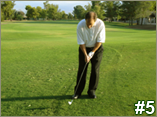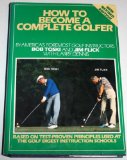Golf Club Bounce… Learn To Take Advantage Of Bounce.
Every golf club in your bag has bounce, some more than others.Here is an explanation of golf club bounce as defined by pgaprofessional.com.
Bounce: “(“bounce sole, bounce angle”) the angle of the club’s sole in relation to level/horizontal, or the amount that the leading edge of the club is higher than the part of the club’s sole that is lower most (usually used in reference to irons, wedges in particular, and measured in degrees) Example: Many sand wedges have a large flange and significant bounce.”
Confused, let`s just say that the bottom of the sand wedge has added material which makes the club more rounded. This rounded material adds weight to the club and prevents the club from digging into the turf or sand.
For reference sake, most sand wedges have around 10 degrees of bounce and a D5 swing weight and your pitching wedge has 7 degrees of golf club bounce and a D1 swing weight.
Golf Club Bounce
1. Help–Prevents The Sand Wedge From Digging Into The Sand
The sand wedge, with the extra bounce, was developed to have a golf club that did not dig into the sand. Obviously, in the sand, you do not want to use a club that digs and gets stuck in the sand. The sand wedge will bounce through the sand and splash the golf ball up onto the green. By the way, you are adding more bounce to the club the more you open the sand wedge club face. So here, the bounce is your friend
.
2. Help–Adds Weight To The Bottom Of The Club
Remember, by making the bottom of the golf club rounded and adding material, we have increased the swing weight of the sand wedge from the normal D1 swing weight to a swing weight of D5. By the way, as you probably have guessed, D5 is heavier than D1. So what this means is that you have a golf club that is heavier that is ideal for hitting out of heavy rough and, of course, sand. Especially, when chipping from heavy rough around the green, the sand wedge is very useful. The bottom line is, use the extra weight to your advantage.
3. Hurt–Golf Club Bounce Will Promote Skulls On A Firm Surface
Now, here is what you need to be aware of. You know that nice bounce that helped you on those bunker and heavy rough shots. Well, it can work against you in very firm sand and shots off of other firm lies. That bounce at the bottom of the sand wedge will not let the golf club dig on firm lies. Even worse, it will promote skulls that can be your worst nightmare. So, be aware of your lie conditions and stay away from the sand wedge on any lie that is not bounce friendly!
————————————————————–
There it is, golf club bounce. Is it your friend or enemy? Be aware, that there is a reason why your sand wedge works so well out of the bunker and learn when the bounce is going to work against you.


